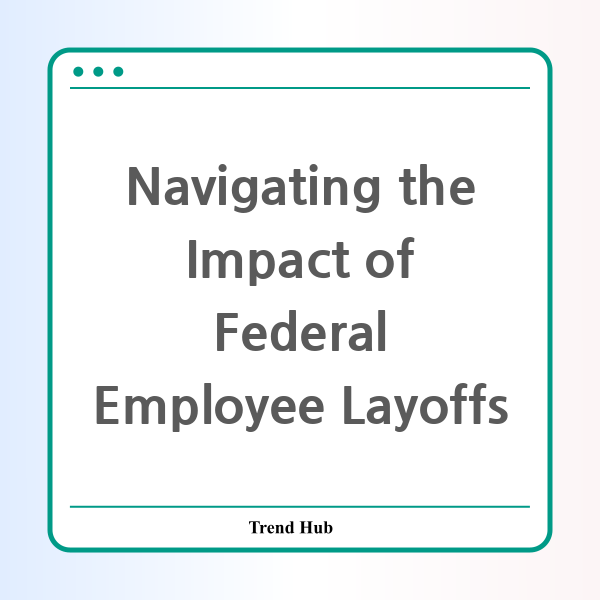* This website participates in the Amazon Affiliate Program and earns from qualifying purchases.

Are federal employee layoffs a necessary step towards government efficiency? As the landscape of the U.S. federal workforce continues to shift, the looming possibility of large-scale layoffs has left many federal workers anxious about job security. With the Trump administration’s recent directives aiming at downsizing the government, it’s essential to understand the implications of these changes, both for employees and the public they serve.
The latest memo issued by the Trump administration outlines a comprehensive strategy for reducing the federal workforce, echoing a desire to optimize efficiency across various government agencies. This move comes as part of the President’s broader initiative to enhance the efficiency of federal operations and eliminate positions deemed non-essential. The memo sets a timeline for agencies to submit their plans for reductions by March 13, signaling a significant overhaul in federal employment practices.
What does the memo entail? Primarily, the memo emphasizes the need for agencies to categorize their employees and pinpoint positions that are not mandated by law, thereby allowing for targeted layoffs. There are specific guidelines to follow, including:
- Identifying essential vs. non-essential employees during government shutdowns.
- Creating a positive vision for future operations that enhances productivity.
- Outlining plans for potential office relocations and technology improvements aimed at cutting costs.
One of the most significant aspects of this initiative is the restriction on hiring, which allows for only one new hire for every four employees that leave. The implications of this are profound, as it directly affects the future landscape of federal employment, leading to a more conservative approach to staffing.
Which agencies are affected? While the efforts mainly target civilian federal workers, certain exceptions exist. Positions in law enforcement, national security, and direct citizen service roles—such as those in Social Security and Medicare—are generally exempt from immediate reductions. This distinction is crucial as it aims to protect critical services directly impacting millions of Americans.
Challenges and Concerns: The ramifications of these layoffs can have multi-faceted consequences. The anxiety among federal employees is palpable, especially those currently in probationary positions without full employment protections. Furthermore, questions arise about how these layoffs might impact public services. With teams already feeling stretched thin, the potential loss of skilled workers could hinder the government’s ability to effectively serve its constituents.
Moreover, the recent cabinet meeting highlighted by Elon Musk further underscored the administration’s ambition to cut spending by significant amounts. Musk indicated a target of cutting the federal budget by $1 trillion within the year, which suggests that layoffs may not only be widespread but could also disrupt essential government functions.
The response from labor unions has been critical, as they raise concerns about the detrimental effects of such workforce reductions on morale and public service delivery. With some agencies reportedly preparing for layoffs ranging from 10% to 40%, the disparities in impact across departments could lead to inequities in how public services are administered.
What to Expect Moving Forward: With the plans due in early March and subsequent deadlines for outlining efficiency improvements, federal agencies are in a race against time to comply with these new directives. The administration’s push for streamlined operations could either revitalize the federal workforce or create turmoil, depending on how the laid-off employees and remaining staff adjust to these changes.
As the situation evolves, it is vital for employees and citizens alike to remain informed about the implications of these layoffs. Residents who rely on government services should stay engaged with local representatives to voice concerns about preserving essential services amid these workforce reductions.
In conclusion, while the promise of a more efficient government is enticing, the pathway to achieving it through mass layoffs raises significant questions about stability and the quality of public service. As we move forward, a careful balance must be struck between efficiency and the fundamental rights and needs of federal employees and the public they serve.
* This website participates in the Amazon Affiliate Program and earns from qualifying purchases.